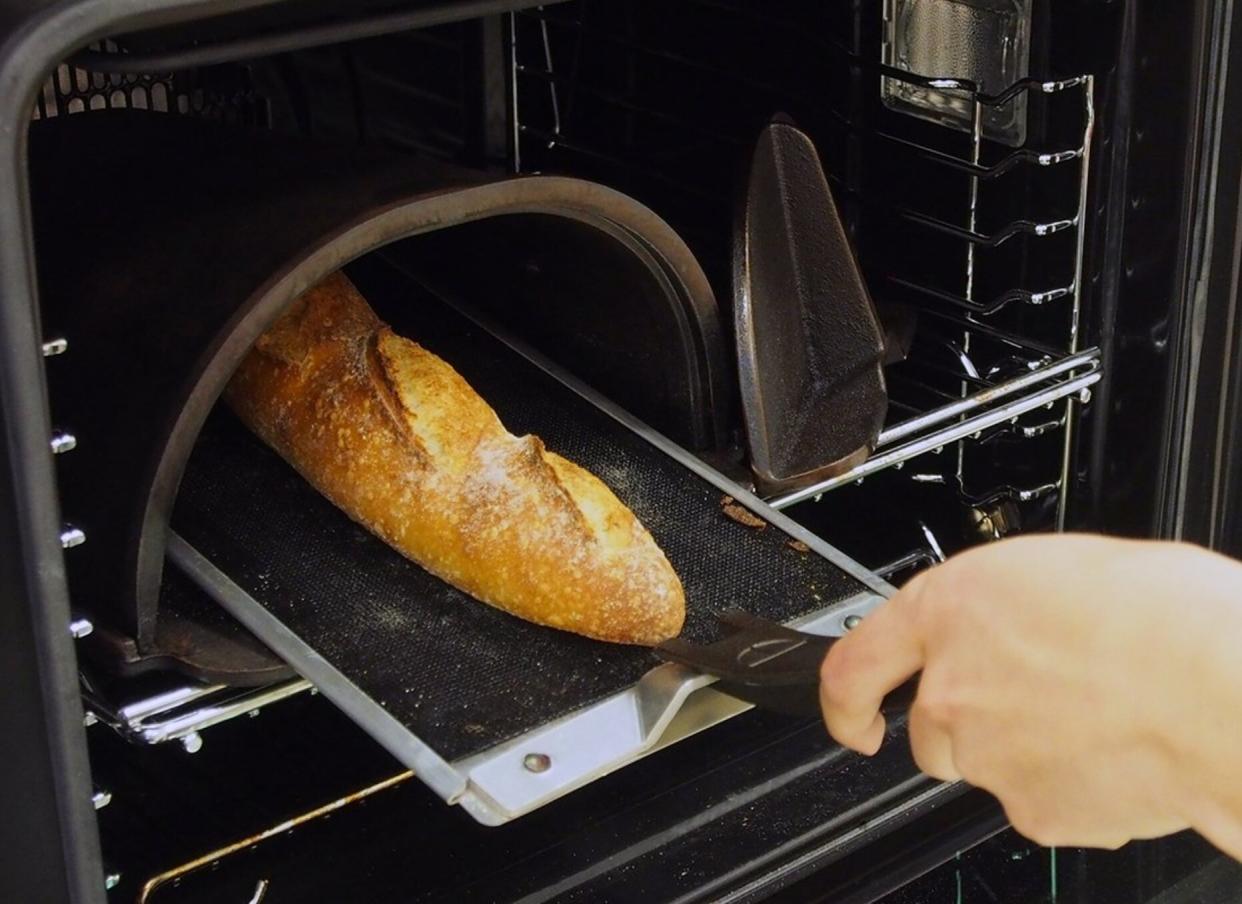This Genius Oven Inside an Oven Appliance Changed My Baking Forever

Courtesy Fourneau
I went deep on sourdough bread baking several years ago. It took me 18 months to tweak the recipe to my preferred level of hydration, the crustiness of the crust, the level of sourness, the flours I liked best. Part of my obsession was health-related: As a type 2 diabetic I needed to find ways to indulge in delicious bread without spiking my blood sugar. Discovering that a 72-hour-long cold fermentation made my bread nearly gluten-free and very low on the glycemic scale meant that I could eat the kind of bread I love without jeopardizing my health.
RELATED: 5 Rookie Sourdough Mistakes and How to Fix Them
Slowly I acquired the right equipment. The coiled reed bannetons to proof the loaves in. A good lame to score the dough. The right peel to move them in and out of the oven.
The challenges of bread baking equipment
But the baking proved hardest. Most cookbooks and online videos will have you bake your bread inside an enameled cast iron Dutch oven to help trap the steam that assists with crust formation, and bakes your bread at super high temps. I was not a fan of this method, finding it awkward to get loaves in and out of the Dutch oven, and preferring oval bâtard shapes to my bread more than round ones. I also liked the way the bottom crust developed when baked on a baking stone instead of on the metal, for a better bottom that had less risk of burning.
RELATED: We Tasted 14 Fancy Butters, and This Is the Best One
I started baking directly on my baking stone with a large oval pot overturned to cover my loaves, which worked well enough, but was always a complicated and dangerous dance, heating the pot with the oven, removing it to load the first loaf, then replacing it over the dough, repeating for a second loaf, all the while losing the heat on the pot.

Courtesy Fourneau
The solution: a Fourneau bread oven!
So, when I found the Fourneau bread ovens, it was like a little miracle. These long, oval cast iron ovens fit inside your regular oven and provide a miniature bread oven that works like no pot can. They have a door at the front, for sliding loaves in and out without losing any heat and provide a great seal for trapping steam. They have a metal baking tray lined in silicone mesh so that you don't have to transfer the loaf once it is scored; the whole tray just slides easily into the Fourneau. The smaller version can be used with its cast iron base or directly on a baking stone, the larger Grande comes with a cordierite baking stone base that has a special groove for those who like to add water for extra steam.
The best part is that the ovens, even the larger one, only take up about half of your oven space, allowing you to move a loaf that might need a bit more exposed browning at the end of baking to the other side of your oven, while still being able to load in a second loaf. It is ideal for those who like to bake several loaves in succession; since you never remove the oven it stays perfectly hot.
A Fourneau oven is about the same price as the Le Creuset pots that many sourdough bakers invest in for their bread baking, but unlike the Dutch oven process, the Fourneaus have wonderful versatility. Baking baguettes, pita breads, even flatbreads and pizzas work brilliantly in these ovens, none of which is possible in the Dutch oven. I love it for other foods as well. Baked potatoes especially come out with crispy skin and fluffy interior, and any roasted vegetable get some seriously flavorful browning.
Buy it: Fourneau Bread Oven 2.0 ($300), fourneauoven.com

